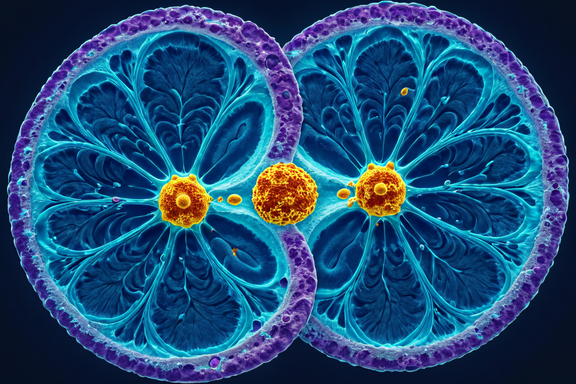Defining Mitosis: Nurturing Cellular Replication
Mitosis is the tightly regulated division of a single eukaryotic cell into two identical daughter cells, each with exactly the same genome as the parental cell.
Stages of Mitosis:
Prophase: Chromosomes condense, the nuclear envelope dissolves, and spindle fibers begin to form.
Metaphase: Chromosomes align along the cell's equatorial plane, forming the metaphase plate.
Anaphase: Sister chromatids separate and move towards opposite poles of the cell.
Telophase: Chromatids reach the poles, nuclear envelopes reform, and chromosomes de-condense.
Significance of Mitosis:
Mitosis allows multicellular organisms to grow, develop and repair tissues by producing new cells.
Asexual reproduction via mitosis: mitosis creates offspring that are genetically identical to the parent organism.
Regulation and Cell Cycle:
Cell cycle checkpoints regulate mitosis in three ways: to make sure that DNA replication is accurate, to make sure that chromosomes get properly segregated, and to make sure that the cell is healthy.
Cancer pathology: Disruption of mitosis can lead to aberrant cell division and therefore runaway development of tumours. Dysregulation of mitosis gives rise to cancer.
Mitosis and Genetic Diversity:
Parent to daughters: no change in genetic identity In mitosis, the parent cell entirely retains its genetic identity. Each of the two daughter cells receives the exact same set of chromosomes.
Genetic variation: While mitosis does not introduce genetic variation, a different type of cell division called meiosis does. This type of cell division is a part of sexual reproduction.
Mitosis and Medicine:
Tissue Regeneration: Mitosis is critical to regenerative medicine because it controls the renewal of damaged or aged tissues.
Various treatments for cancer target the specifically speedy cell behaviour of tumours – at the cellular level, this means drugging cells in mitosis to prevent growth of the tumour cells.
Mitosis—Cellular Symphony of Life
To sum up, mitosis is a remarkable microscopic dance of life whose rhythm generates growth, development and tissue renewal for all life forms on Earth – by assuring genetic continuity and therefore enabling the continuity of life itself. Certainly, as we are unveiling its mechanisms, we are learning some of the basic principles of life’s assembly line. And yes, mitosis is working hard to help us to grow, regenerate, reproduce asexually, and even to go through surgical treatments against cancer or chemotherapy. Without a doubt, mitosis may well be our unsung hero of life. It is the eternally moving harmony that keeps life in good shape, through all the ups and downs of life’s journey, for it makes life possible by building and renewing it.
